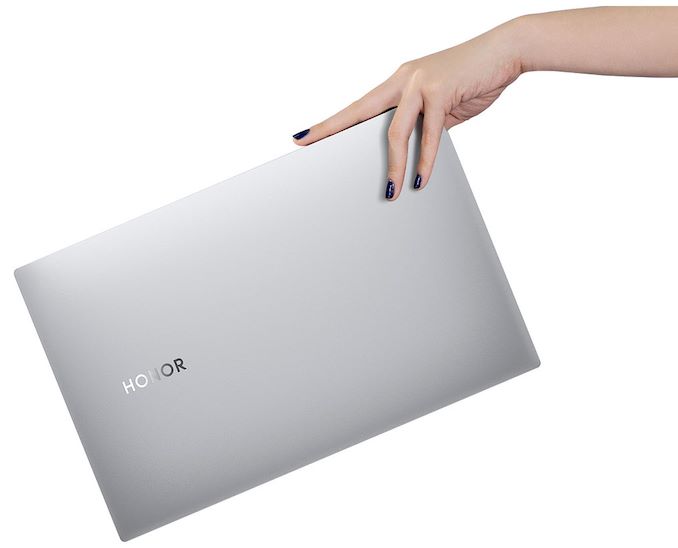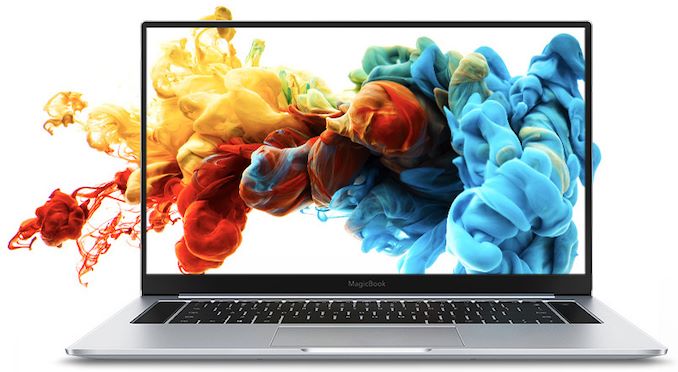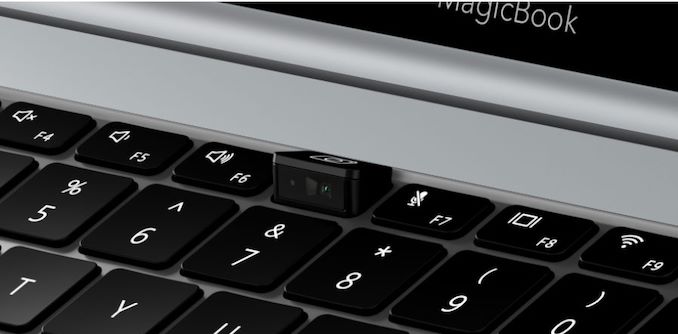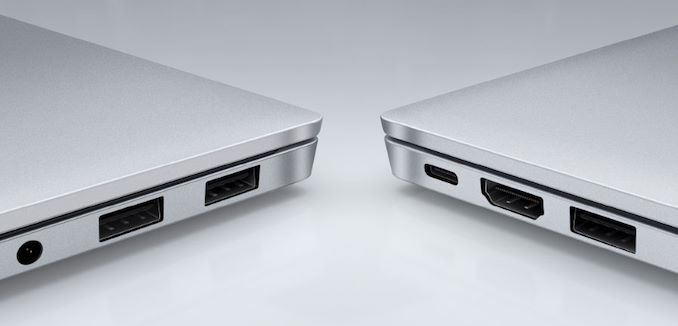Honor Announces MagicBook Pro with 16.1-Inch Display
by Anton Shilov on July 24, 2019 11:00 AM EST- Posted in
- Notebooks
- Intel
- Laptops
- NVIDIA
- honor
- Whiskey Lake
- MagicBook Pro

Honor has announced its new laptop featuring a rare 16.1-inch display with ultra-thin bezels. The MagicBook Pro notebook packs a quad-core processor from Intel as well as a discrete graphics chip from NVIDIA, yet it remains relatively compact and lightweight. Set to be available in China initially, the notebook will cost less than $1000 in Honor's domestic market.
Recent developments of display manufacturing technologies enabled makers of monitors to cost-efficiently produce screens featuring sizes that are different from those primarily used for notebooks today (e.g., 13.3, 14, 15.6 inches). Driven by necessity to differentiate their products from competing offerings, makers of mobile PCs are keen to adopt the latest components, and Honor will be one of the first vendors to use such 16.1-inch displays. The new size is meant to help close the gap between 15.6-inch as well as 17-inch class laptops by offering larger screen real estate in a more compact form-factor.
Aimed at users looking for high performance, Honor’s MagicBook Pro is based on Intel’s quad-core Core i5/i7 codenamed Whiskey Lake processor, and is accompanied by NVIDIA’s GeForce MX250 discrete graphics chip with 2 GB of GDDR5 memory. To ensure consistent performance of the two key components, the laptop uses a cooling system that includes two thick heat pipes and two fans. Depending on the SKU, these notebooks will come with 8 or 16 GB of RAM, as well as with a 512 GB or 1 TB SSD.
Despite the large display and high-end components inside, the Honor MagicBook Pro weighs only 1.7 kilograms and is 16.9 mm thick.
The MagicBook Pro comes in an aluminum chassis that resembles the look of Apple’s MacBook Pro. Meanwhile, Honor’s laptop has a number of distinctions: it has a pop-up webcam that is integrated into a dedicated keyboard key, and it features a common set of physical ports typically found on a notebook: one USB 3.1 Type-C port, three USB 3.0 Type-A ports, a HDMI, and a 3.5-mm audio jack for headsets.
The wireless department of the notebook includes a 2x2 Wi-Fi controller supporting up to 1733 Gbps throughput over 160 MHz channels. As for battery life, the MagicBook Pro features a 56 Wh battery, which is common inside 13.3-inch PCs, but is less so for larger machines such as the MagicBook Pro. In this regard, it seems Honor has put priority on the weight and size of the laptop rather than integrating bigger cells.
Honor’s MagicBook Pro with a 16.1-inch display will be available in the near future in China starting from RMB 5499 (think MSRP of around $710 in the USA), but there is no word whether Honor or its parent company Huawei intend to offer the laptop outside of their domestic market.
Related Reading:
- Honor’s Thin-and-Light MagicBook with AMD Ryzen Mobile Listed
- Intel and Microsoft to Continue Supporting Existing Huawei Notebooks
- Huawei Readies Windows 10 Laptop Based on Qualcomm Snapdragon 850
- CES 2019: Huawei Launches the Matebook 13
Source: Honor













24 Comments
View All Comments
pookguy88 - Wednesday, July 24, 2019 - link
is there any downsides to buying one in China and using it here? I'm assuming you'll need to format and install an English Windowsedzieba - Wednesday, July 24, 2019 - link
You might run into WiFi radio weirdness (e.g. losing a good portion of 5GHz channels) if the radio region cannot be user modified.GreenReaper - Wednesday, July 24, 2019 - link
I'd hope it uses 802.11d, which will detect suitable frequencies from the base station.Would be more worried about firmware or other malware from there, to be honest.
wr3zzz - Wednesday, July 24, 2019 - link
Most laptops sold in China comes with Windows 10 Home OEM, which is locked into Simplified Chinese only, and the license does not transfer to other languages.DanNeely - Wednesday, July 24, 2019 - link
Could someone elaborate on: "Recent developments of display manufacturing technologies enabled makers of monitors to cost-efficiently produce screens featuring sizes that are different from those primarily used for notebooks today "I thought the sizes picked were largely factors of "what lets the default sized big sheet of glass/plastic get cut into screens without wastage around the edge"; and that unless you were going for a wierdo resolution that there was a lot of setup work in changing the pixel density to get a normal resolution out.
Paul Tarnowski - Wednesday, July 24, 2019 - link
Yeah, this warrants more research. Used to follow the trade mags for displays, but it's been a few years because most of it was, "This thing which was shown at a trade show, which can't be scaled up, but they say scaling is totally around the corner."Anton Shilov - Wednesday, July 24, 2019 - link
There are several trends when it comes to displays evolution.First, dimensions. Second, pixel density. Third, cost.
Once the cost of a processed substrate is low enough and its PPI is high enough, you may go on with large/non-standard dimensions. So, yields of panels just got high enough because of refinements of manufacturing technologies and other factors.
Oxynux - Wednesday, July 24, 2019 - link
No thunderbolt 3 ?nicolaim - Wednesday, July 24, 2019 - link
Too bad about the lack of more modern ports and higher-res LCD, as this looks quite good otherwise.I also feel that the discrete graphics is a waste in this category.
skavi - Wednesday, July 24, 2019 - link
Huawei's names are always so terrible.